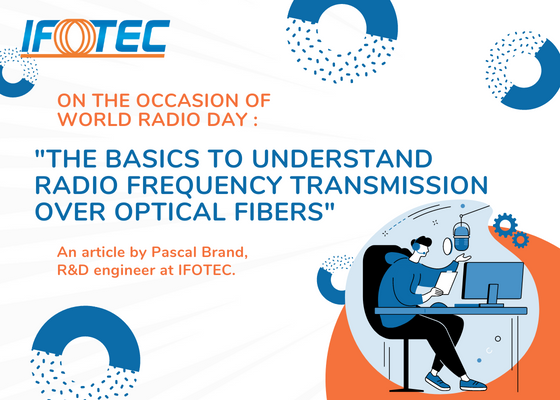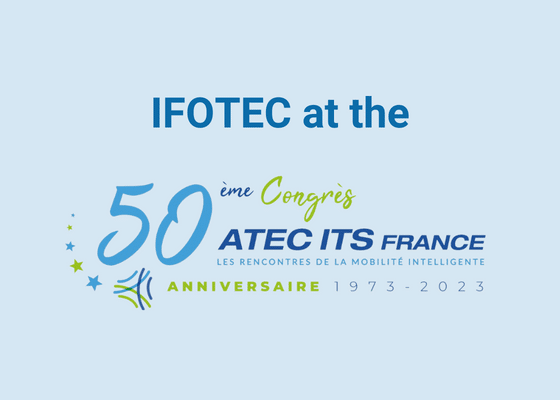
Radio frequency transmission on FO
The basics to understand radio frequency transmission over optical fibers
Celebrated every February 13, World Radio Day is there to remind us of the importance of this information tool which, according to international reports, remains the most used today. Pascal Brand, an R&D engineer specialized in the field of radio frequencies, chose to give us a technical overview on how radio frequency transmission on optical fibers works, an IFOTEC specialty.
The choice of optical fiber to deport a radio signal, an antenna signal or television channels has advantages, but the quality of a radio frequency deport is also based on parameters and values that must be taken into consideration.
Why RF over optical fiber ?
The RF (Radio Frequency) transmission on optical fiber allows a fast deportation of an RF signal from few meters to several kilometers without any external perturbation.
RF deport system
It is possible to transmit several RF signals on the same optical fiber at the same time using WDM (Wavelength Division Multiplexing). This technique allows for example to transmit up to 18 wavelengths simultaneously in one optical fiber with a spacing between each wavelength of 20nm. This is called CWDM (Coarse Wavelength Division Multiplexing).
The 4 parameters to control for an optimal radio transmission
Optical emission
The optical emission is performed by lasers that offer a much smaller spectral width than LEDs. A DFB laser (Distributed FeedBack laser) has a spectral width below 0.4nm and can emit optical powers of several milliwatts up to several Gigahertz.
OMI (Optical Modulation Index)
To ensure a good transmission, it is necessary to adjust the OMI (Optical Modulation Index) of the laser. If the OMI is too high, distortion phenomena such as intermodulation (IP2/IP3) between the transmitted signals will appear, creating spurious signals. If the OMI is too low, the signal will be very close to the noise level and the quality of the transmitted signal will be affected.

Optical reception
Photodiodes typically used in reception are PIN diodes (InGaAs) which allow a faithful reproduction of the signal thanks to their high linearity and their wide optical bandwidth.
Carrier to Noise Ratio
The quality of a transmission is characterized by the C/N (Carrier to Noise Ratio) which determines if the transmitted signal is exploitable by the receiving terminal.
The required C/N value depends on the modulation technology and the bandwidth of the RF channel that supports the service.
A QAM256 (Quadrature Amplitude Modulation) modulation will therefore be more restrictive than a QAM64 modulation.
The noise power is proportional to the bandwidth occupied by the channel, which defines the bandwidth penalty Pbw= 10 log bw. For example, in DVB-T (Digital Video Broadcasting – Terrestrial), standard for broadcasting digital terrestrial television (DTT), the width of a channel can be 6, 7 or 8MHz.
Radio frequency transmission over optical fiber is reliable and has a very good quality but requires to control several factors and parameters as well as having expertise in high frequency technology. This particular knowledge allows us to offer technical solutions for “outdoor” or “indoor” applications such as:
- Radio coverage (FM, INPT)
- Mobile network (GSM,3/4G, LTE, TETRA,… )
- CWDM solutions, multi-frequency band
- Satcom, GNSS (GPS, Galileo, …) and Radar deport
- CATV, Analog and digital TV type DVB (TNT, UHF-VHF)
To learn more about IFOTEC’s radio frequency and telecom services continuity solutions, click here.



